
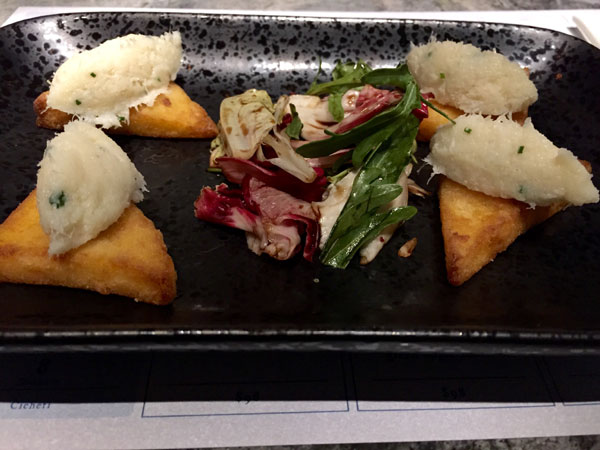 |
|
Salt cod with potato and salad makes an attractive plate. [Photo by Mike Peters/China Daily] |
Despite the ancient city-state's star status as the grand terminus of the Maritime Silk Road, Venice has not left much imprint on the Italian food scene in China. While the flavors of Tuscany, Rome and Sicily have become commonplace, the culinary legacy of Venice struggles for some limelight.
In Hong Kong, Sepa is trying to change that. The name means "cuttlefish", and we were naturally anticipating a night of great seafood. But long before we could pop a succulent morsel of squid in our mouths, we became entranced by the Silk Road lore at the bar.
A signature cocktail, the rosemary spritzer, seems pink in the romantic low light of the bar. Orange liqueur, in fact, gives the prosecco and ginger base its infusion of color, and perched on top is a fresh spring of the namesake herb. The result is an amazing nose that lingers until the drink hits bottom.
"It's no wonder Venetians love rosemary," proclaims the bar menu. "Not only has it been used to flavor wines since the Middle Ages, it was also one of the herbs and spices that helped Venice prosper during the spice trade in the 13th century."
Such lore pervades the menu: "Loved by the Venetians, Greeks and Romans, artichoke is rich in antioxidants," the drinks list says of the vegetable used in making mojitos, while the Venetian martini "takes you back in time to the days of the spice trade" with its inclusion of saffron and anise.
The surroundings of the bacaro are just as evocative of Venice's heyday. Giacomo Marzotto, co-founder of Sepa with Gerald Li of Catalunya, put down a terrazzo floor made with tiny marble fragments for the requisite palatial effect.
The wine rack evokes mooring poles used in the city of canals, while the gold and silver Venetian masks that hang overhead come from the generations-old Bluemoon Venice workshop.
One can't help looking at the door for the arrival of the medieval glitterati-a Borgia or a Medici, perhaps-in search of refreshment.
In Venice, many dishes famously display the region's early seafaring contact with the Muslim world.
In pesce de saor, fish-often sardines, sometimes mackerel-is marinated for days in layers of onions, white-wine vinegar, pinenuts and raisins, and the caramelized onions and raisins give the fish an unexpected sweetness despite the vinegary base. Oranges, bay leaves and mixed greens-also originally brought to the region by traders-may also flavor the saor.
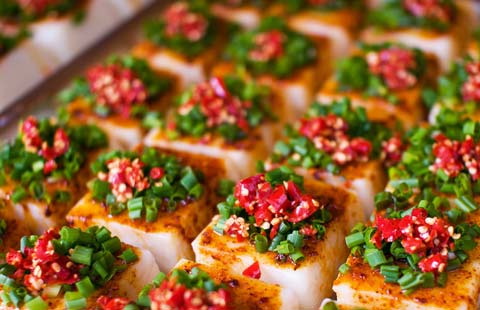
China's top 10 foodie cities |
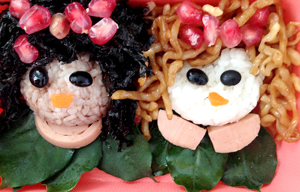
Cute boxed meals |
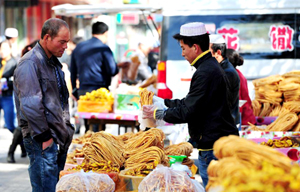
Muslims greet annual festival of Eid al-Adha in Yinchuan |
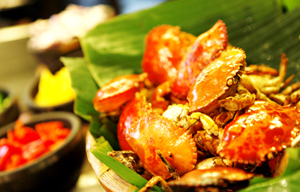
Cafe Noir hosts Singapore food festival |
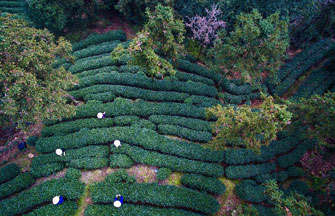
Farmers harvest West Lake Longjing tea in Hangzhou |
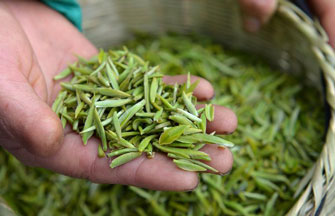
Tea plucking season in China's Guizhou |
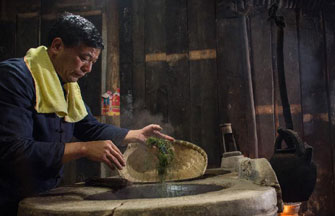
Farmers make tea before Qingming Festival |

Amazing moments of Amsterdam Chocolate Festival |